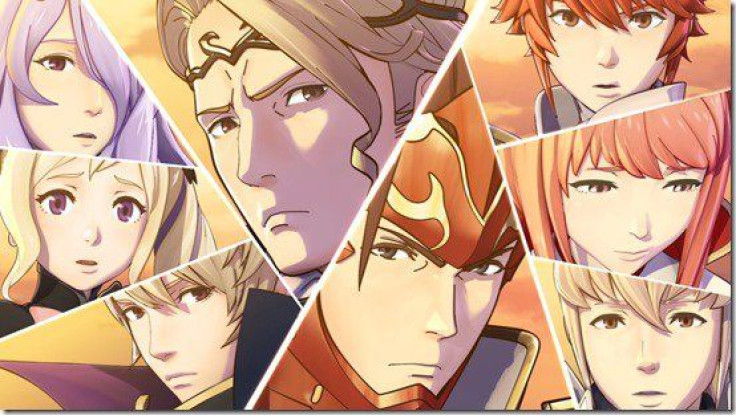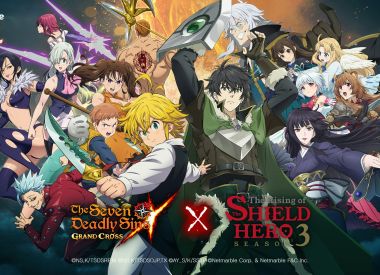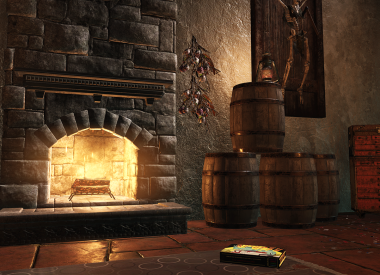Fire Emblem Fates splits its story in two, Birthright and Conquest , and allows you to follow either side of a grim war between the nations of Nohr and Hoshido. As it turns out, both roads are a joy to follow due to the distinct feel of each plotline, a cast of characters packed with lovable scamps on both sides and a genuinely difficult choice to make between the two games. Birthright and Conquest provide complete, addictive, and highly replayable Fire Emblem experiences.
The Plots
Birthright presents a very valid claim on the main character, Corrin, who was stolen from the royal family of Hoshido as a child and whose siblings have coped with the loss in different ways. Your biological family, all of whom long to know you and have suffered without you, immediately welcomes you. Their appeal to Corrin at the Branch of Fate in Chapter 6 is heart-wrenching.
The royal family of Nohr, however, is the family you know. Your adoptive siblings are a capable and charismatic set. When your big brother Xander cries that they are the ones who have loved you and raised you Conquest makes a compelling point that’s achingly hard to refuse.
It’s weird -- in a good way -- to have a choice feel so difficult. Many games that offer a choice assign a morality so transparent (press “x” to slit the dog’s throat and bathe in its blood, press “y” to adopt it and give it the loving home it needs) that the aspect of choice need not be advertised.
Fire Emblem Fates’ evil Nohr/good Hoshido dichotomy isn’t exactly sophisticated, which makes their success at creating a sincerely anguishing choice between the families even more noteworthy. (All the more anguishing, I assume, for those who don’t purchase the Special Edition that contains both paths.)
On the Birthright side of things, the story follows you and your family’s righteous path towards ridding the world of Nohrian evil. You encounter your adoptive family many times and usually try to achieve some reconciliation. On the Conquest side of things, the story basically follows your siblings’ attempts to protect you from your abusive, evil adoptive father. In Birthright , you take on Nohr head-on; in Conquest , you struggle to change it from within.
Your reasons for pursuing the war are actually the same in both stories -- you acknowledge that Nohr must be stopped -- but you learn faster in Conquest that not all is as it seems in Nohr. While some chapters in Conquest and Birthright are very close, they all maintain a distinct point of view that doesn’t make the two storylines feel like cheap reskins of each other. Each has its own merits, memorable dialogue and secrets to discover.
There’s also a third route you can take: a DLC storyline called Revelation , where you side with neither family and make your own way in the world. This one is meant to be experienced after both Conquest and Birthright , so spoilerphobes, make your choice carefully.
The Flavor
I really need to give a major nod to the game for making Nohr and Hoshido very distinct aesthetically. The aesthetic difference carries all the way through to class options and resources. Birthright is feudal Japanese, with classes like Onmyoji and Basara. Conquest is dark, Western and medieval in feel, with classes like Cavaliers and Troubadors.
While all types of classes are available to both games, from ranged to mage to shapeshifter, the flavor of them changes between the two armies. Hoshidans have food resources like rice and fish, with meals like sashimi coming out of the Mess Hall. Nohrians have wheat and milk, and their Mess Halls produce recipes like creamed beef.
For the most part, your personal army is populated by your siblings, each of whom has a duo of quirky royal retainers. A few other memorable characters meander into the army as you progress through the main story. The characters, always fun and always a highlight of the Fire Emblem series, are varied between the two storylines. Psychopaths, peppy types, dashing sorts and grumps are sprinkled liberally and equally throughout both armies with a plethora of entertaining Support conversations to enjoy.
There’s also a base-building element that’s new from Fire Emblem: Awakenings and really fun. Private Quarters give you a chance to spend more time with favorite characters, Mess Halls give you semi-random character buffs, the Arena gives you the chance to bet on gladiatorial battles starring members of your army, and an assortment of shops allow you to purchase supplies. Almost everything can be leveled up, and for those so inclined, shaping the look and nature of their base is practically its own mini-game. The look of the base and resources farmed depend on your allegiance, though the basic functionalities do not.
The Combat
It’s important to note that Birthright is far superior in terms of opportunities to grind XP and collect treasure. Challenges appear regularly, scaled to your level. You can scout for additional Challenges by spending a pittance of treasure, which is so widely available you’ll struggle to spend it. By contrast, Conquest players scrape by with little but the rare Invasion or the S-rank Paralogues to grind XP outside of the main storyline.
This is by design, as Conquest is supposed to be the greater challenge. Trust me: it is, since you’ll be tackling harder fights at lower levels than a corresponding Birthright player. But let it be known that Fire Emblem Fates is, after all, a tactical role-playing game. Classic Mode, where your characters who die in battle are permanently killed, is a real nailbiter regardless of what game you’re playing.
While most classes are noted as either Nohrian or Hoshidan (you won’t run into many Nohrian Ninjas), you can recruit prisoners you capture in combat through the Prison building. This enables you to work in some favorite classes of the opposing nation, but without the ability to build Support. The Prison is especially important in Classic Mode as your army’s numbers drop, but even if you’re playing on super-easy mode, you may still want a favorite class from the opposing country on your team.
Overall: Should I buy Birthright or Conquest?
If you respond well to the cherry blossoms and katana, feudal Japanese aesthetic, and you want a more cheerful storyline with plenty of opportunities to grind for Support ranks, XP and treasure, then go with Birthright.
If you like a darker story with scanter resources, you prefer a medieval Western look with gothy splashes, and you’d rather bust a move through the main chapters than dilly-dally in random challenges, then go with Conquest.
Either way, rest assured that both Birthright and Conquest tell complete stories on their own. You will not be shafted by choosing one over the other.
As a professional completionist, however, I would be absolutely maddened if I couldn’t immediately play one after the other and explore both storylines (and the DLC) as quickly and deeply as possible. Fire Emblem Fates is so sincerely fun, the characters so endearing and the gameplay so engaging that there’s no way you won’t immediately want to delve back into the world you just left and learn more about it from a different point of view.
So if you’re a real completionist or the Support conversations are some of your favorite parts of Fire Emblem , then the Special Edition, which has both storylines as well as the Revelation DLC included, may be for you. But the answer, like your choice at the Branch of Fate, truly depends on you.


















